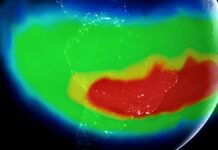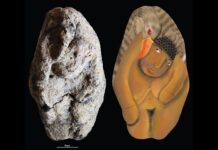The European Space Agency’s Euclid mission has already transformed our understanding of galactic evolution after just one year of operations, observing 1.2 million galaxies and revealing key insights into how these cosmic structures form and grow. The telescope’s extraordinary field of view and sensitivity are reshaping our knowledge of galactic structure, from the largest spirals to the faintest dwarf galaxies.
Unveiling the Galactic Tuning Fork
For decades, astronomers have used the “galactic tuning fork” diagram to classify galaxies based on their shape: spirals on the right, ellipticals on the left. Euclid is now filling in the details, revealing how galaxies evolve from blue, star-forming spirals to red, quiescent ellipticals through mergers and gas exhaustion.
“Euclid offers an unprecedented combination of sharpness and sky coverage — it will map the entire extragalactic sky,” says Maximilian Fabricius, a scientist at the Max Planck Institute for Extraterrestrial Physics. “For the first time, we can systematically study how the shapes and central structures of galaxies relate to their formation history on truly cosmic scales.”
Black Hole Growth Through Galactic Mergers
A key finding from Euclid’s first data release is the prevalence of “secondary nuclei” in merging galaxies. These represent potential future supermassive black hole binaries, which form when galaxies collide and their central black holes spiral together.
The process is inevitable: as galaxies merge, their supermassive black holes orbit each other, emitting gravitational waves that carry angular momentum away from the system. This causes the black holes to spiral closer until they collide, forming an even more massive black hole. This merger-driven growth is a primary mechanism for the formation of giant elliptical galaxies.
“The most massive black holes lie at the centres of giant elliptical galaxies and are thought to grow primarily through mergers with other supermassive black holes,” Fabricius explains. “By detecting and analysing secondary nuclei, Euclid enables us to explore how these enormous black holes continue to grow — and how their growth influences the galaxies that host them.”
Discovering the Hidden Population of Dwarf Galaxies
Euclid’s sensitivity has also revealed a surprising abundance of dwarf galaxies, which are too faint to observe in detail with previous telescopes. The mission has already identified 2,674 dwarf galaxies, many containing compact blue cores or globular clusters.
These dwarf galaxies are believed to be the building blocks of larger galaxies like the Milky Way, and their discovery is reshaping our understanding of galactic structure. The prevalence of dwarf galaxies suggests that the universe is dominated by small, faint structures rather than large, spiral galaxies.
A Glimpse of What’s to Come
The first data release from Euclid only covers 0.5% of the mission’s ultimate dataset. By the end of its six-year primary mission, Euclid will have studied tens of millions of galaxies, promising further breakthroughs in our understanding of cosmic evolution.
The telescope’s ability to map the extragalactic sky in unprecedented detail is already revolutionizing our view of the universe, and its future discoveries will undoubtedly reshape our understanding of galactic structure and evolution.
Euclid is proving to be a transformative mission, revealing the intricate connections between galaxies, black holes, and the overall evolution of the cosmos
























